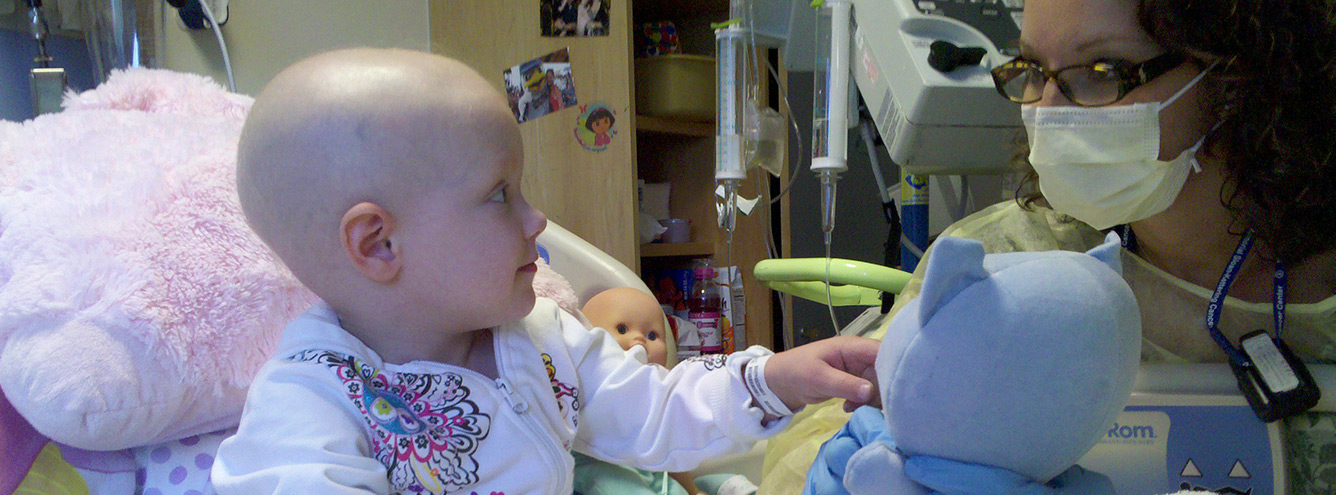Leukocoria
A White pupil is the most common sign of retinoblastoma. This “cat’s eye reflex” is seen in flash photographs when red-eye reduction is turned off, or in dim light.
Light reflects off the cancer’s chalky white surface, causing the pupil of the eye to appear white, like a cat’s eye at night.
Strabismus
Also known as a squint, strabismus can be the first sign of retinoblastoma. This is a misalignment of the eyes that may either turn in or out, up or down. Strabismus is often incorrectly referred to as “lazy eye”.
Strabismus is a common occurrence in babies younger than six months, and frequently resolves naturally. However, the baby’s eyes should be examined to ensure retinoblastoma or another serious eye condition is not the underlying cause. Delaying screening until after six months old may be devastating for a baby who does have retinoblastoma.
Leukocoria (cat’s eye reflex, white pupil)
Strabismus (squint)
When Something Looks The Same As Nothing
Strabismus and leukocoria, the most common signs of retinoblastoma, can also occur in healthy eyes. In tthis blog article from May 2019, Sandra Staffieri, Rb Care Co-ordinator at the Royal Children’s Hospital, Melbourne, Australia, examines both and answers the key question – when should parents and doctors be concerned? Read our blog article.
Other Symptoms
A red, painful eye may be the first sign that something is wrong. Pain indicates a very advanced tumour that is a threat to life, and rapid specialist referral is essential.
A bulging eye (proptosis) is also a very serious indicator of advanced cancer, and the child should be urgently seen by an ophthalmologist.
Extraocular Retinoblastoma
Seek specialist ophthalmology care immediately if you notice any of the following:
- A red, painful, bulging or ruptured eye
- A swelling in the socket of a removed eye
- The artificial eye becomes difficult to fit
Trilateral Retinoblastoma
Symptoms occur when the brain tumour compresses or invades local structures, or spreads to other parts of the brain.
Symptoms of pineal region tumours include:
- severe headaches that wake the child and are relived by vomiting.
- increased pain on leaning forward
- persistent nausea and vomiting
- inability to look upwards or fix gaze (the child may close the eyes excessively because of this).
- irregular pupil shape
- inability to judge distance
- impaired balance
- abnormal drowsiness
- loss of consciousness
Symptoms of suprasellar and parasellar tumours may also include:
- excessive thirst and drinking
- precocious puberty (puberty that occurs earlier than is normal)
- reduced visual acuity
- a bulging eye
- stunted growth
- memory loss,
- increased appetite and weight gain
- inability to regulate temperature
- low sodium levels (sodium is an electrolyte)
Remember that many of these symptoms can be caused by other less serious conditions. However, in children with a known or suspected constitutional RB1 mutation, unexplained symptoms should be investigated promptly.
If any of these symptoms occur and persist for more than a few days, we recommend you contact the ophthalmologist or oncologist who has been leading your child’s care. Primary doctors may not realize the significance of these symptoms.
Second Primary Cancers
Individuals with an RB1 pathogenic allele (a genetic change that causes retinoblastoma), whether or not they had eye cancer as a child, has an increased lifelong risk of certain other cancers. Common second primary cancers are:
- Soft tissue sarcomas (cancers that develop in the muscle, tendons and ligaments, and fatty tissue)
- Osteosarcoma (a type of bone cancer).
- Cancers in the mouth and nose.
- Malignant Melanoma (a type of skin cancer).
- Brain tumours (glioblastoma multiforme, astrocytoma and meningioma).
Read more about Symptoms of Second Primary Cancers.





